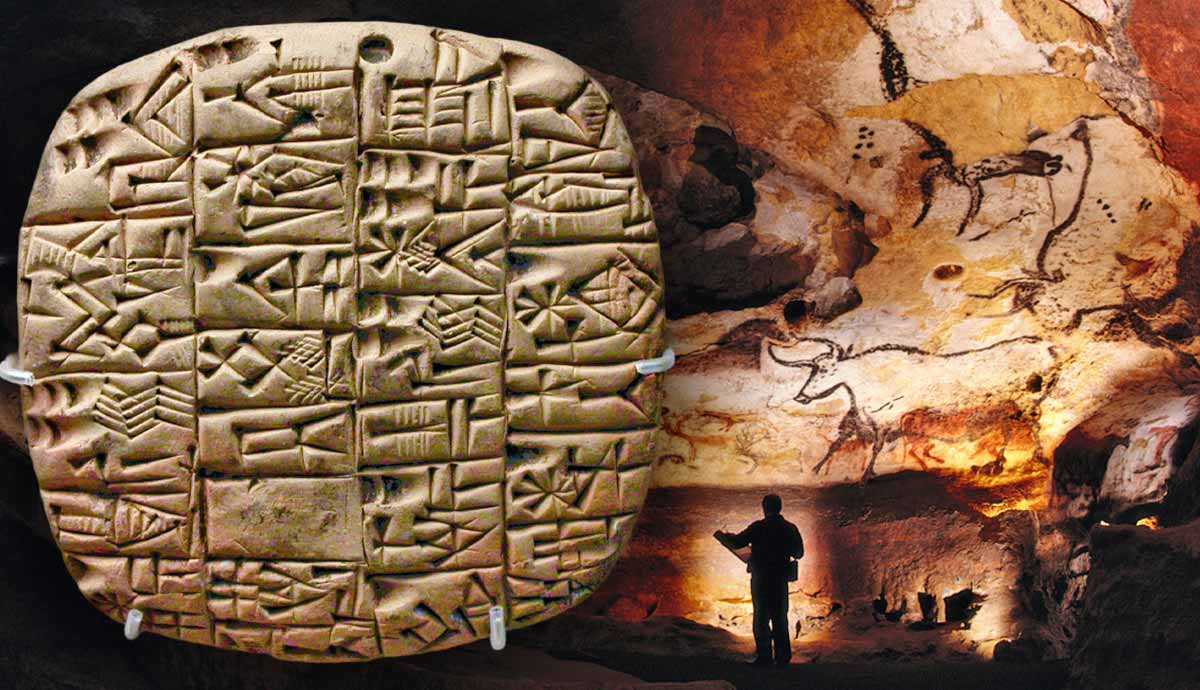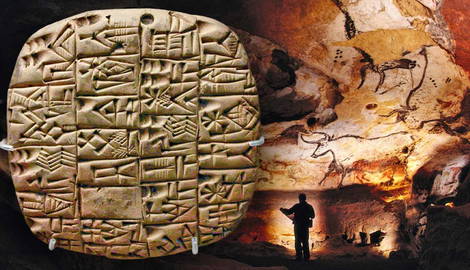
Humans have been making records of their activities for thousands of years. We have developed various systems of writing from various cultures, and several came about independently of one another. From paleolithic records to Chinese lettering, we take a closer look at some of the earliest writing systems developed by humans, which evolved into more sophisticated systems over the centuries.
Paleolithic Records

Commonly called “stone age” paintings, the oldest known human records are European cave paintings in places like Lascaux in Montignac, France. Recent studies have compared several of the paintings across Europe, and discovered they were used as a rudimentary method of calendaring and keeping track of animal mating behavior. The Lascaux and similar paintings have been dated to around 10,000-30,000 years old, making them some of the oldest human records by about 10,000 years. Other cave paintings, such as the Maltravieso Cave in Spain and the Sulawesi Indonesia, have depictions of hunting scenes that may be over 40,000 years old.
Lascaux cave drawings and similar work is known as “proto-writing,” as it does not have a standardized format and uses pictures to convey messages, but the are different from cave drawings in that they have an element of attempt to convey specific records.
The Earliest Writing Systems

Cuneiform tablets of Sumerian Mesopotamia and the Hieroglyphs of ancient Egypt are considered the first writing system, developed in the 3000s BCE. Cuneiform uses a wooden or reed stylus to press representative indentations into wet clay tablets, which are then dried and stored. It was initially used as a sort of accounting system, and developed from a pictographic system to a syllabic (where symbols stood for sounds) over centuries.
Egyptian Hieroglyphs developed around the same time as Sumerian Cuneiform, but apparently in a more sudden manner. For many years, until modern times, it was thought that the Egyptian Hieroglyphs were purely pictorial in nature, but the discovery of artifacts such as the Rosetta Stone in 1799 (by Napoleon Bonaparte’s army) aided in discovering that Egyptian hieroglyphs were far more complex in structure. The oldest complete sentence is deciphered from an ancient Egyptian hieroglyph from around 2600 BC – “He has united the Two Lands for his son, Dual King Peribsen.”
Ancient Chinese Writing

Chinese writing systems seem to have developed independently from other cultures around the 2000s BCE, with roots that may go back even further. Written Chinese remains one of the oldest continuously used systems of writing, as a modern Chinese person can understand much of what was written over the past few thousand years. Chinese writing has probably undergone the least change out of most writing systems, as it remained among similar isolated cultures over the millennia.
Early Forms of Writing in the Americas

Independent Mesoamerican writing developed long after that of the Sumerian and Egyptian cultures, beginning around possibly 1000 BCE, if not later. The earliest writings are more of a style of hieroglyphs from the Olmec culture, the earliest major civilization in Mesoamerica. Several of the following civilizations in Mesoamerica developed writing, such as the Aztecs and Mayans.
No known system of writing from Native North Americans exists, but they did use other methods of record-keeping, such as a strong oral tradition, wampum belts, and pictograms. Discoveries regarding ancient writings continue in archaeology, and every year new information is unearthed regarding what we know – and what we do not – about ancient cultures and their writing systems.










